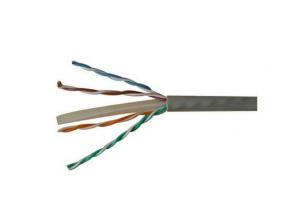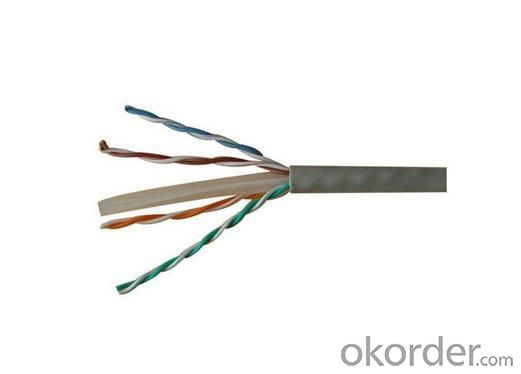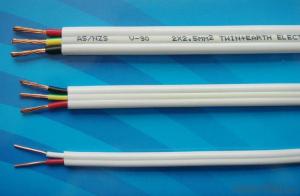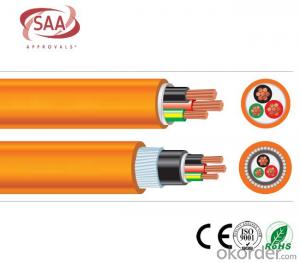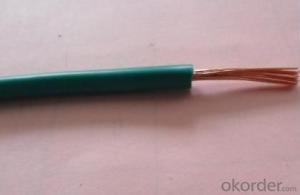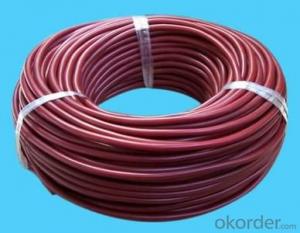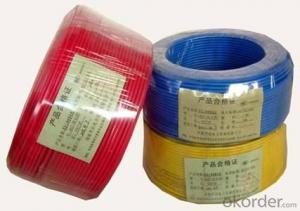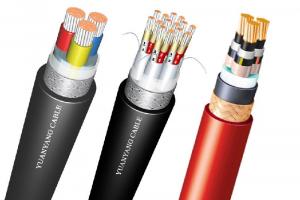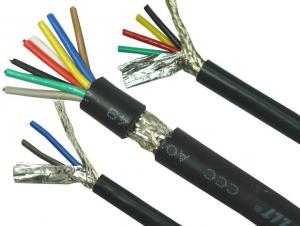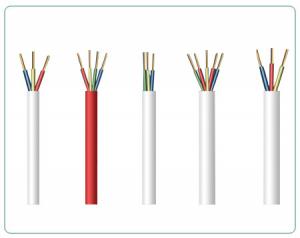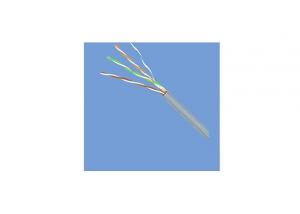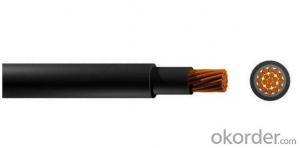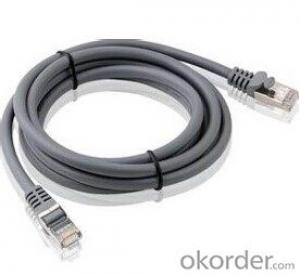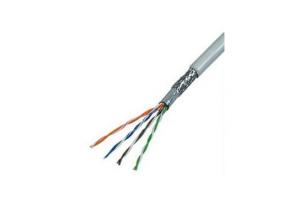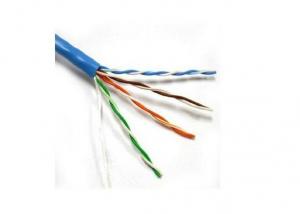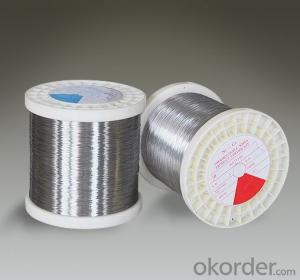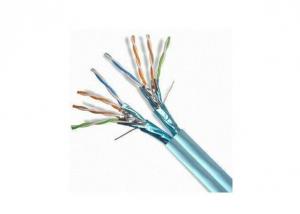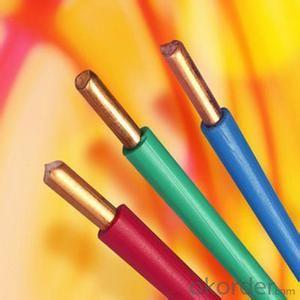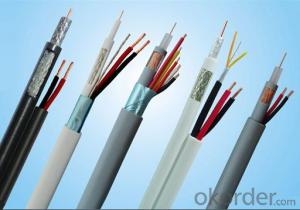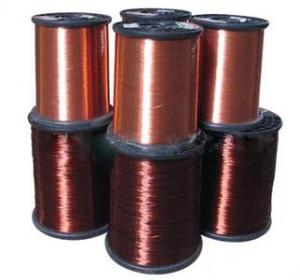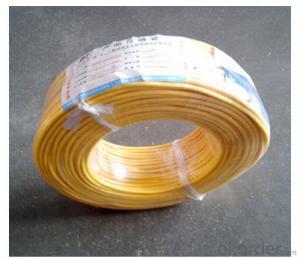Cat5 UTP Lan Cable
- Loading Port:
- China Main Port
- Payment Terms:
- TT or LC
- Min Order Qty:
- 1000 Meters m
- Supply Capability:
- 600000 Meters per Day m/month
OKorder Service Pledge
OKorder Financial Service
You Might Also Like
Specifications
*Test Report: Fluke 4300
*Stadards: CSA-C22.2 No.214,Type CM TIA/EIA-516
*Solid BC conductor;
*HDPE insulated
*LSZH jacket
*OEM is acceptable
*Raw material of the conductor solid bare copper
*Conductor Dia 0.575+/-0.003mm23AWG
*Raw material of the conductor:F-PE
*Quantity:4 twisted pairs
*Blue/White-blue; Green/White-green;
*Orange/White-green; Brown/White-brown;
*Instruction dia :1.024+/-0.005mm
*Sheath material:LSZH PVC
*Nominal Dia:6.5 +/-0.2mm
*Average thickness:0.60mm
Sales Features:
*High quality approved,strict QC controlled.
*Specialized and personalized service.
*OEM and ODM are welcomed.
*Competitive price
- Q: I have an old craftsman Powr Panl (yes spelled that way) and it has an extension cord on it that has 10 individual wires on the inside. There are 5 dull white ones, and then five that are: bright white, red, black, green, and brown. Any ideas? This is the original cord, and was hooked up in 1950 at one point. Any ideas?
- Standard colors for power cords these days are white (for neutral/return), black (for 'hot' - think bad guys in black hats, it's the wire that will zap you if holding onto the kitchen faucet when live and you touch it), and green (for ground). Note that the white wire is the return path that carries current while the green is usually connected to the case or chassis and should trip the circuit breaker if it begins to carry current. A guess? The name Powr Panl suggests that this is a power distribution panel with multiple outlets. It's possible the color coding was used to help track connections to ganged panels. Just a guess though. With perhaps more detail, a better informed guess could be made. What does the panel look like? How large are the wires? To what do they connect? Feel free to email for follow-up.
- Q: All the DIY info shows how to change a light fixture. What do you do with the wiring if you want to remove a chandelier, but not replace it with another?I want to make sure the wires in the ceiling are not capable of starting a fire. This is in the first floor of a two-story.
- TURN CIRCUIT OFF.GET A LADDER,SCREW DRIVERS,WIRE NUTS,ELECTRICAL TAPE,COVER PLATE FOR THE HOLE OR YOU CANREFILL HOLE.UNSCREW CHANDELIER, USING SNIPS CUT WIRES,PUT WIRE NUTS OR EACH INDIVIDUAL WIRE,THEN TAPE EACH SEPERATE BUT TOGETHER SO IF NEEDED AGAIN.OR GO TO THE WALL SWITCH.UNSCREW PLATE,TAPE WIRES SEPERATE THEN BIND TOGETHER,IF YOU ARE GOING TO REPLACE CHANDELIER WITH ANOTHER LIGHT INSTALL LIGHT ON CHANDELIER END
- Q: I don't really have much detail but my mum asked me to look it up so if you know what shes going on about give me an answerThanks in advance :D
- Is it possible she's looking for ampacity ratings? The link below lists the current-carrying capacity, or ampacity, of wire against diameter. In terms of current carrying, thicker is always better. In terms of cost, thinner is better. A household branch should be rated for at least 15 A. Appliances may use 20-30 A or more.
- Q: Wire on the 3 +2 with 4 +1 What is the meaning, please speak of the popular point, too professional do not understand.
- If it is a cable trench, in general, the mortgage cable is on top, the high voltage cable is underneath
- Q: HelloRecently I installed 100W Bulbs in my home and noticed that the light fixtures became extremely hot and within 10 minutes they had started melting the insulation. So i looked at the wire and found that it was 18 Gauge and found that through all fixtures of the home some of them with at least 20 feet of wiring is this up to code? I also noticed that many sockets would not allow a laptop to charge or even a cell phone what could be the cause of this? I'm in ontario canada.
- I believe that Ontario codes requires that NMD90 14 gauge wire be used.
- Q: I like this Christian girl and I want to seduce her but I heard that they have electrical underwear
- umm first offnothat underwear does not exist. However, could you honestly live with yourself after seducing a girl into having sex with you when you know she will feel absolutely terrible about it afterward? I think you should be really asking yourself that.
- Q: I am looking to do some electrical work and I was thinking of a way to make electrical wiring turn cold. I have a good imagination, so I am thinking I need to remove free negative electron ions from the conductive material. I dont know if this means it neads a load a ground or watever I mean I am guessing blind to electricity. My pops said dip it in liquid nitrogen but I detest this solution. Anyone have ideas? I really am at a loss concerning electrical circuitry, any ideas?
- I do not understand your question? Are you revering to electrons traveling with no impedance at absolute zero. You cannot create that enviorment in your home. You need a lab with expensive equipment. Lowering the temp 30-50 degrees isn't going to do anything. copper will have the same nominal resitance at -27f that it does at 80f. So I don't understand why you want to do that but if you did wire a LED to a batter and stick in the freezerA cold electrical circuit!
- Q: I am working with electrical currents and I have one battery and one light bulb and one wire. How do I make the light bulb light?
- Place the battery on a metal table or sheet upright. Connect one bulb terminal to the positive using the wire and place the bulb such dat the other terminal touches the metallic return. Similar lines to the other answer The basic principle is just providing a common return path, just like a bus bar arrangement
- Q: I know that the color codes tell you whether its neutral and other purposes, but do i need to find the same colored wire to extend one, or do i need the same one? And are they just for safety purposes?
- In the US the colors generally have to stay the same. There are exceptions, the code book is a big book. Switches have some exceptions, like a white could have been used in existing installation as a hot from a light to a switch, a white could be marked and used as a hot on a 240v circuit, and the colors from one side of a switch may change colors, and if you have fed a multiwire circuit with 12/3 or 14/3 NM cable you can extend the red and white circuit with a black and white, but generally unless you can find an specific exception that matches your installation then for an extension the color needs to match.
- Q: That is now the new house has that position in the living room sofa wall mosaic of a small iron box, about 40 × 25 cm, which there are many wires called the box? Know friends say ~ thank you! More
- Living room behind the sofa, inside the wall with a lot of wires called the power distribution box, also known as strong electric box. The figure below is one of the following: the distribution box in the figure, the first on the left is the main switch with a leakage protector, the right is the air outlet to the power outlet and lighting open. Power distribution box installed at a height of 1.5 meters from the ground.
1. Manufacturer Overview
| Location | Guangdong,China |
| Year Established | 2011 |
| Annual Output Value | US$50 Million - US$100 Million |
| Main Markets | 10.00% North America 10.00% South America 10.00% Eastern Europe 10.00% Southeast Asia 10.00% Domestic Market 10.00% Mid East 10.00% Eastern Asia 5.00% Western Europe 5.00% Central America 5.00% Northern Europe 5.00% Southern Europe 5.00% South Asia 5.00% Africa |
| Company Certifications | ISO 9001:2008;ISO 14001:2004;CE;ROHS |
2. Manufacturer Certificates
| a) Certification Name | |
| Range | |
| Reference | |
| Validity Period |
3. Manufacturer Capability
| a) Trade Capacity | |
| Nearest Port | Shenzhen,Hongkong |
| Export Percentage | 51% - 60% |
| No.of Employees in Trade Department | 6-10 People |
| Language Spoken: | English, Chinese, Japanese, Korean |
| b) Factory Information | |
| Factory Size: | 1,000-3,000 square meters |
| No. of Production Lines | 5 |
| Contract Manufacturing | OEM Service Offered Design Service Offered Buyer Label Offered |
| Product Price Range | Low and/or Average |
Send your message to us
Cat5 UTP Lan Cable
- Loading Port:
- China Main Port
- Payment Terms:
- TT or LC
- Min Order Qty:
- 1000 Meters m
- Supply Capability:
- 600000 Meters per Day m/month
OKorder Service Pledge
OKorder Financial Service
Similar products
Hot products
Hot Searches
